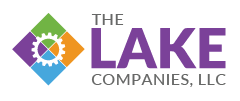Visualization Technologies in Manufacturing Have Arrived

Forward-looking manufacturers who want to thrive must lean forward into the winds of change and readdress the ways in which they plan, design and operate their factory floors. Data is waiting, like a massive body of water behind a dam, for shop floor managers to channel and harness its power. Aggregating massive amounts of data is one thing, but making sense of all that noise and turning it into a symphony of intelligence, which is both informative and useful, is the challenge facing manufacturers. Companies who rise to the challenge will be home to the next generation of data-driven manufacturing systems, with a superior competitive advantage. One way organizations can achieve this is by making use of data visualization.
What is Data Visualization?
The need for analytics to present data in a processed and meaningful way has never been more important. New equipment, technology & software, and capital improvements to facilities all lead to the data pipe getting wider and wider. So what is data visualization?
In its simplest form, data visualization is data in a familiar, one-dimensional method like graphs, drawings, charts, spreadsheets, blueprints, photographs, maps, CAD drawings, or any kind of visual representation. However, today, data visualization is evolving into dynamic, interactive formats that go beyond static graphs and give users the ability to drill down into the charts and graphs for added details and even change the data and processing rules in the middle of analysis.
Spreadsheets have become a thing of the past in dealing with advanced manufacturing analytics because the information coming down the pipe is so vast and rapid. Spreadsheets would need to be thousands of rows and columns in dimension and would involve continuous updating. Gathering any kind of useful information would take days of interpretation.
Examples of Manufacturing Visualization Technology
Additive manufacturing, or 3D Printing, is an example of manufacturing visualization technology. This technology integrates disparate sources of input data, such as CAD geometries and programming logic, and uses manufacturing-specific simulation behaviors to create accurate simulations and visual representations of those inputs.
CPQ (Configure Price Quote) technology simplifies and speeds up the configuration, pricing, and quotation of complex and customized products. The software helps manufacturers come up with optimal product configurations based on customer requirements.
Virtual, Augmented and Mixed Reality (VR/AR/MR) devices are poised to transform the 21st century factory floor. Consider any product, like an automobile or jet engine, made up of thousands of components, involving complex assembly. Using augmented reality glasses or goggles, an operator with little or no training could help assemble even the most intricate and difficult-to-understand products with the aid of visual step-by-step assembly instructions. The same technology can provide complex maintenance assistance, expert support and quality assurance.
ERP Dashboards, like those found in CloudSuite Industrial/SyteLine, allow managers to track important metrics and KPIs aligned with business objectives specific to their industry. Because the information is so specific and insightful, managers can use the CSI dashboards spending less time searching for information, making better decisions, and more time hitting their targets and getting the job done.
Effective Manufacturing Analytics such as The Lake Companies’ Fact-Trak™ makes it easier for manufacturers to access, analyze and dashboard data from CSI/SyteLine ERP in order to provide greater clarity and make instant impact, actionable decisions. This allows manufacturers to increase sales, reduce costs and streamline their operations.
Benefits of Visualization Technology
- Faster sales cycles
- More accurate pricing
- Greater opportunities to upsell
- Decreased errors
- Faster order fulfillment
- Faster production times
- Streamlined workflow
- Trends and patterns are easier to discern
- Easier communication and comprehension of results, concepts and other insights
- Easier to isolate issues and outliers that could inhibit production
- Easier to spot correlations that may be hindering efficiency
- Reduced risk of design errors and oversights
- Empowers stakeholders to participate in the planning and design process
Visualization technologies in manufacturing help teams to visualize their factory environment and the products they produce, and enlightens them of the impact of their decisions on manufacturing design and performance, with engineering-grade accuracy. It also improves collaboration throughout the planning process and in almost every way, visualization technologies provide a tremendous, positive impact on the factory floor. In order to remain competitive, manufacturers are expected to and will want to embrace the improved technologies. Contact The Lake Companies today to learn more.

